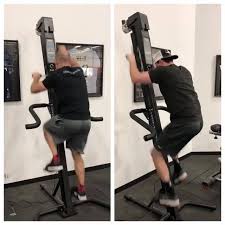
5 Ways to Avoid Boredom in Your Strength and Conditioning Programs
Good strength and conditioning programs change before people adapt to them physiologically, but rarely do you consider that some people may have adapted to those programs psychologically much earlier. In other words, some people get bored quickly and need to shake things up to keep training fun. To that end, here are five strategies you can employ to make sure that you don’t find going to the gym monotonous.
1. Get a new strength and conditioning program.
At Cressey Sports Performance, we generally change programs with our athletes and clients every four weeks. With all of them on their own individualized programs, this obviously makes for a lot of program design responsibilities for our staff. However, an individual gets excited when he or she receive a programs that isn’t only new, but uniquely his or hers.
I often see people do the same programs for months and months upon end. There might be a small percentage of the strength training population who can tolerate it, but based on my interaction with thousands of the clients over the years, long-term results are far better when people are having fun. So, if you’ve been doing the same program since 1994, you might want to consider shuffling things up a bit.
2. Tinker with an existing strength and conditioning program.
It’s not mandatory that you overhaul the program; you might just need to tinker with things. Maybe you increase volume significantly in one training session or week to really challenge someone before deloading in the subsequent week. Perhaps you modify exercise selection or the sets/reps scheme from week to week. The variations you can add are limited only by your creativity, but the important thing is that there is some variation in there, particularly if the individual doing the program is someone who gets bored easily.
3. Meet up with a new training partner.
I speak a lot about the importance of having good training partners and camaraderie in the gym. With this in mind, I’m convinced that the fact that people meet and train alongside new people every time they come to Cressey Sports Performance has a lot to do with our success. While consistency is certainly a valuable quality to have in a training partner, the truth is that people seem to work harder when they’re surrounded by new people. It may kick-start a little competitive fire or even just be a matter of people not wanting to be perceived as “non-hard-working.” Whatever it is, sometimes the people surrounding you during a training session can have a big impact on the effort you put in – and the excitement you take away from the session.
4. Try some new training equipment.
A lot of fitness enthusiasts complain when they go on vacation and check out the hotel gym for the first time – only to discover less than stellar equipment selections. I’m not sure how people got the idea that a vacation resort would make a power rack, glute ham raise, and 2,000 pounds of free weights a priority when designing a resort for the masses, but some people do have this expectation nonetheless.
I’m much more of a glass-is-half-full kind of guy, so I view vacation training as an opportunity to shuffle my training up with some equipment access. It’s not going to kill you to use some machines for a week, and you won’t waste away if you do more body weight exercises for a few days. Chances are that you’ll make yourself really sore and – when you’re hitting the dessert bar for the fifth time – you’ll feel a little better about yourself knowing that you still worked hard and have the physical reminder of it.
Even if you’re not on vacation, you can change things up very easily. It could be as simple as throwing a pair of Fat Gripz on the bar or dumbbell, or using a specialty bar for some squats or lunges.
5. Compete with yourself.
One of the biggest mistakes I see among gym-goers is that they rarely track their progress. It only takes a few seconds to write down what you did in a given session, but for some reason, most people don’t log their training sessions. If you can’t remember what you’ve done, how can you determine if you’re making progress in the direction of your goals? As an example, a partner challenge we recently developed at CSP is the 2,000-foot sprint on the Versaclimber. Each person goes 100-feet as fast as possible, and you alternate back and forth until you get to the 2,000-foot mark. Our fastest yet is 9:31, and it’s brutal.
There’s something wildly motivating about seeing improvements from week to week – even if they’re only represented by a few seconds on the screen of a piece of equipment. If you find yourself getting bored in the gym easily, then I’d suggest that you start tracking things a bit more closely so that you can head off that boredom before it sets in. Plus, you might actually find that there’s a reason to celebrate progress instead of just loathing the trips to the gym!
These are just five strategies to help you keep your strength and conditioning programs and sessions from getting boring, and there are surely many more. If you’re looking for some direction to shake things up, I’d encourage you to check out my High Performance Handbook, the most versatile training program on the market. It’s on sale for an additional $50 off – taking it to roughly half its normal price – through Sunday at midnight. Just head to www.HighPerformanceHandbook.com and enter coupon code OCT24 to get the discount.



